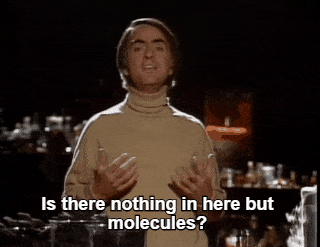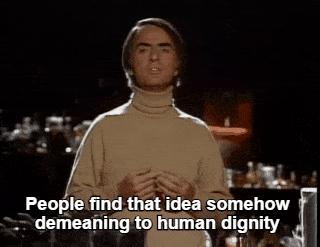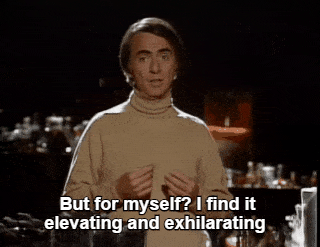The-grey-areas-blog - Infinity And Beyond

More Posts from The-grey-areas-blog and Others
u know what … i changed my mind… all u scientists out there who worked ur butts off just to have your research purposefully ignored by the government… do your science thing and bring back the dinosaurs… catch them ignoring you when a velociraptor is our next president…. like ding dong what’s that? it’s science, it doesn’t care about your silly ignorant opinion… it’s back with a vengeance… and it’s hungry, bitch


The only good thing I can see coming out of Brexit (if they actually deliver beyond a speech)
Living and Working Aboard Station
Join us on Facebook Live for a conversation with astronaut Kate Rubins and the director of the National Institutes for Health on Tuesday, October 18 at 11:15 a.m. ET.
Astronaut Kate Rubins has conducted out of this world research aboard Earth’s only orbiting laboratory. During her time aboard the International Space Station, she became the first person to sequence DNA in space. On Tuesday, she’ll be live on Facebook with National Institute of Health director Francis Collins, who led the effort to map the human genome. You can submit questions for Kate using the hashtag #SpaceChat on Twitter, or during the live event. Here’s a primer on the science this PhD astronaut has been conducting to help inspire your questions:

Kate has a background in genomics (a branch of molecular genetics that deals with the study of genomes,specifically the identification and sequencing of their constituent genes and the application of this knowledge in medicine, pharmacy,agriculture, and other fields). When she began her tenure on the station, zero base pairs of DNA had been sequenced in space. Within just a few weeks, she and the Biomolecule Sequencer team had sequenced their one billionth base of DNA aboard the orbital platform.
“I [have a] genomics background, [so] I get really excited about that kind of stuff,” Rubins said in a downlink shortly after reaching the one billion base pairs sequenced goal.
Learn more about this achievement:
+First DNA Sequencing in Space a Game Changer
+Science in Short: One Billion Base Pairs Sequenced
Why is DNA Sequencing in Space a Big Deal?
A space-based DNA sequencer could identify microbes, diagnose diseases and understand crew member health, and potentially help detect DNA-based life elsewhere in the solar system.
+Why Sequencing DNA in Space is a Big Deal
https://youtu.be/1N0qm8HcFRI
Miss the Reddit AMA on the subject? Here’s a transcript:
+NASA AMA: We just sequenced DNA in space for the first time. Ask us anything!
NASA and Its Partnerships

We’re not doing this alone. Just like the DNA sequencing was a collaborative project with industry, so is the Eli Lilly Hard to Wet Surfaces investigation, which is a partnership between CASIS and Eli Lilly Co. In this experiment aboard the station, astronauts will study how certain materials used in the pharmaceutical industry dissolve in water while in microgravity. Results from this investigation could help improve the design of tablets that dissolve in the body to deliver drugs, thereby improving drug design for medicines used in space and on Earth. Learn more about what we and our partners are doing:
+Eli Lilly Hard to Wet Surfaces – been happening the last week and a half or so
Researchers to Test How Solids Dissolve in Space to Design Better Tablets and Pills on Earth
With our colleagues at the Stanford University School of Medicine, we’re also investigating the effects of spaceflight on stem cell-derived heart cells, specifically how heart muscle tissue, contracts, grows and changes in microgravity and how those changes vary between subjects. Understanding how heart muscle cells change in space improves efforts for studying disease, screening drugs and conducting cell replacement therapy for future space missions. Learn more:
+Heart Cells
+Weekly Recap From the Expedition Lead Scientist for Aug. 18, 2016
It’s Not Just Medicine

Kate and her crew mates have also worked on the combustion experiments.
Kate has also worked on the Bigelow Expandable Activity Module (BEAM), an experimental expandable capsule that docks with the station. As we work on our Journey to Mars, future space habitats are a necessity. BEAM, designed for Mars or other destinations, is a lightweight and relatively simple to construct solution. Kate has recently examined BEAM, currently attached to the station, to take measurements and install sensors.

Kate recently performed a harvest of the Plant RNA Regulation experiment, by removing seed cassettes and stowing them in cold stowage.

The Plant RNA Regulation investigation studies the first steps of gene expression involved in development of roots and shoots. Scientists expect to find new molecules that play a role in how plants adapt and respond to the microgravity environment of space, which provides new insight into growing plants for food and oxygen supplies on long-duration missions. Read more about the experiment:
+Plant RNA Harvest
NASA Astronaut Kate Rubins is participating in several investigations examining changes in her body as a result of living in space. Some of these changes are similar to issues experienced by our elderly on Earth; for example, bone loss (osteoporosis), cardiovascular deconditioning, immune dysfunction, and muscle atrophy. Understanding these changes and how to prevent them in astronauts off the Earth may help improve health for all of us on the Earth. In additional, the crew aboard station is also working on more generalized studies of aging.
+ Study of the effects of aging on C. elegans, a model organism for a range of biological studies.
“Quantum physicists discovered that physical atoms are made up of vortices of energy that are constantly spinning and vibrating; each atom is like a wobbly spinning top that radiates energy. Because each atom has its own specific energy signature (wobble), assemblies of atoms (molecules) collectively radiate their own identifying energy patterns. So every material structure in the universe, including you and me, radiates a unique energy signature. If it were theoretically possible to observe the composition of an actual atom with a microscope, what would we see? Imagine a swirling dust devil cutting across the desert’s floor. Now remove the sand and dirt from the funnel cloud. What you have left is an invisible, tornado-like vortex. A number of infinitesimally small, dust devil–like energy vortices called quarks and photons collectively make up the structure of the atom. From far away, the atom would likely appear as a blurry sphere. As its structure came nearer to focus, the atom would become less clear and less distinct. As the surface of the atom drew near, it would disappear. You would see nothing. In fact, as you focused through the entire structure of the atom, all you would observe is a physical void. The atom has no physical structure—the emperor has no clothes! Remember the atomic models you studied in school, the ones with marbles and ball bearings going around like the solar system? Let’s put that picture beside the “physical” structure of the atom discovered by quantum physicists. No, there has not been a printing mistake; atoms are made out of invisible energy not tangible matter! So in our world, material substance (matter) appears out of thin air. Kind of weird, when you think about it. Here you are holding this physical book in your hands. Yet if you were to focus on the book’s material substance with an atomic microscope, you would see that you are holding nothing. As it turns out, we undergraduate biology majors were right about one thing—the quantum universe is mind-bending. Let’s look more closely at the “now you see it, now you don’t” nature of quantum physics. Matter can simultaneously be defined as a solid (particle) and as an immaterial force field (wave). When scientists study the physical properties of atoms, such as mass and weight, they look and act like physical matter. However, when the same atoms are described in terms of voltage potentials and wavelengths, they exhibit the qualities and properties of energy (waves). (Hackermüller, et al, 2003; Chapman, et al, 1995; Pool 1995) The fact that energy and matter are one and the same is precisely what Einstein recognized when he concluded that E = mc2. Simply stated, this equation reveals that energy (E) = matter (m, mass) multiplied by the speed of light squared (c2). Einstein revealed that we do not live in a universe with discrete, physical objects separated by dead space. The Universe is one indivisible, dynamic whole in which energy and matter are so deeply entangled it is impossible to consider them as independent elements.” - Bruce H. Lipton, The Biology of Belief: Unleashing the Power of Consciousness

“This is a reminder of what we can do when we look out for one another. Like Joe Biden and so many other Americans, I’ve lost people I love deeply to cancer. I’ve heard often from those whose loved ones are suffering from Alzheimer’s, addiction, and other debilitating diseases. Their heartbreak is real, and so we have a responsibility to respond with real solutions. This bill will make a big difference, and I look forward to signing it as soon as it reaches my desk.” —President Obama on the passage of the bipartisan 21st Century Cures Act, which includes $1.8 billion dollars for Vice President Biden’s Cancer Moonshot initiative to end cancer as we know it
I struggle to understand why other white people refuse to realise they're racist. You can be at every rally, supporting every cause, it doesn't matter. We were raised to be inherently racist, and the sooner you face up to that the sooner you can actually work on solving the problems. Prejudice is automatic in most of our upbringings, and if you're living your life saying 'oh but I'm not racist', you're never actually gonna get rid of those prejudices.
Why are people so surprised north korea was able to build a weapon of that range. That's literally their main point of funding. Maybe if the USA and Europe stopped underestimating other countries out of their own supremacist values, we wouldn't be in this position



The essence of life is not the atoms and small molecules that go into us, it’s the way, the ordering, that those molecules are put together.
- Carl Sagan
that new theme feel (@themecloset the babes)
'We're a grey area in a world that doesn't like grey areas'
48 posts